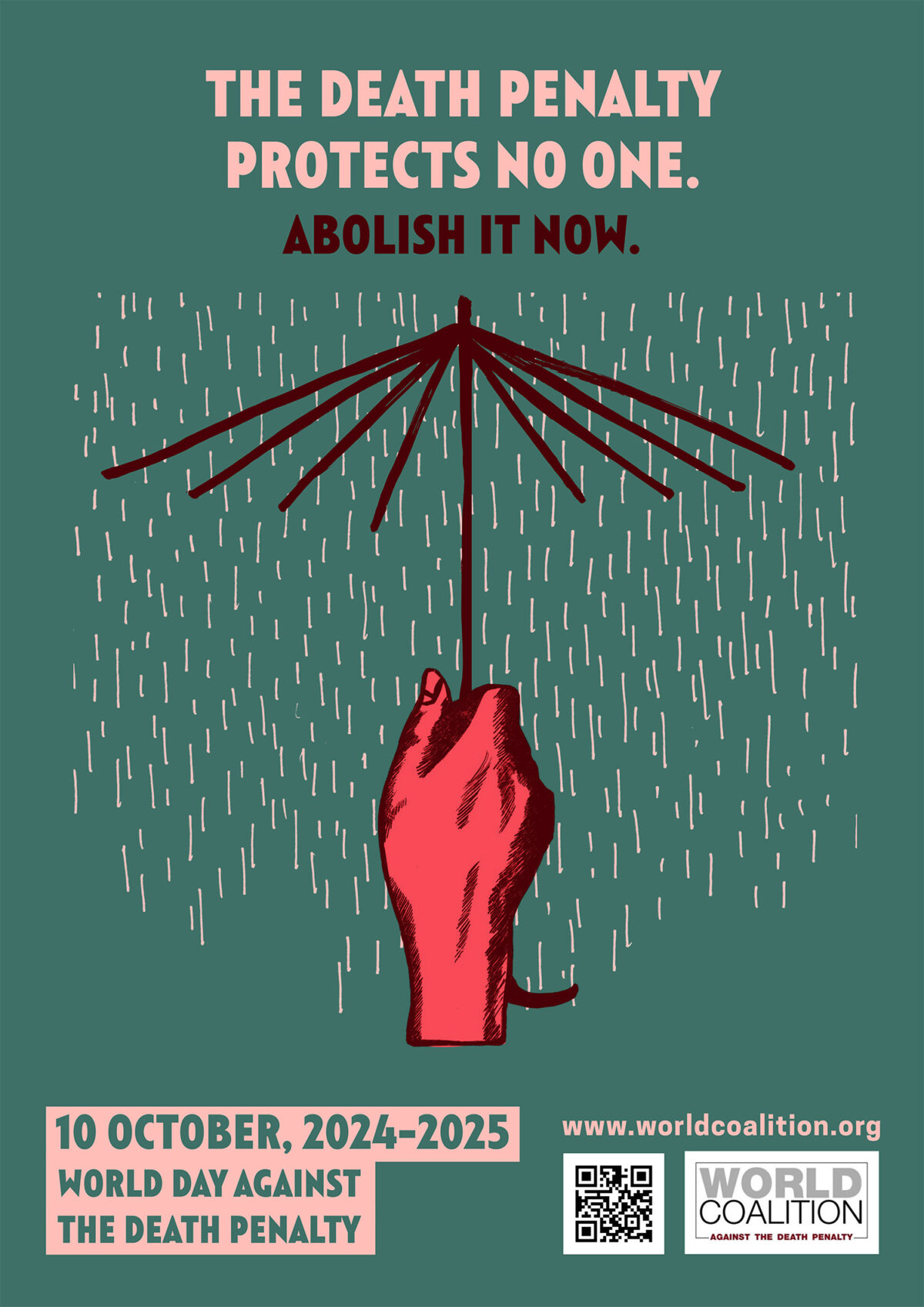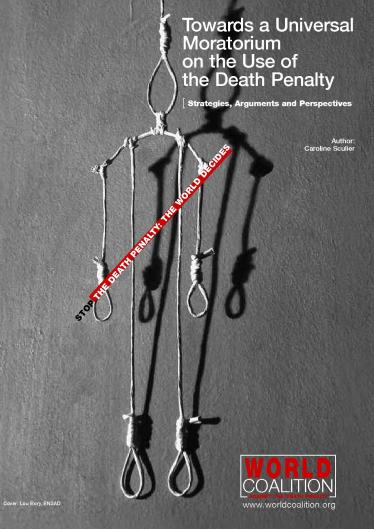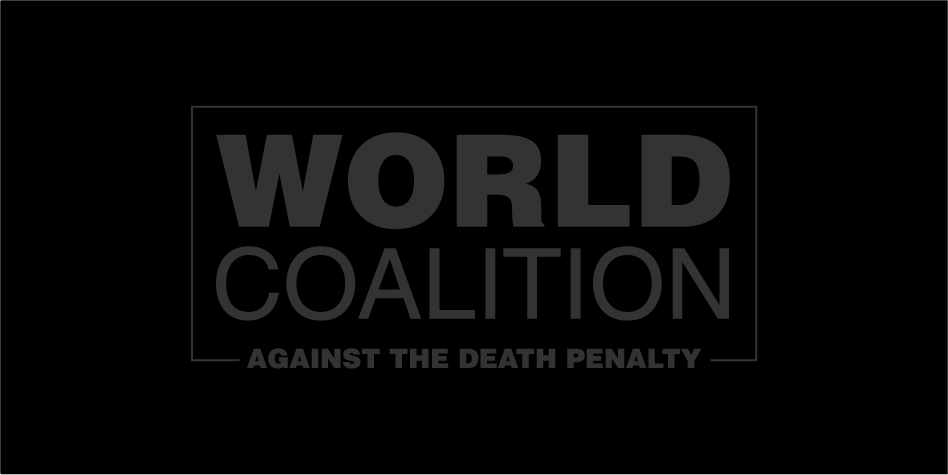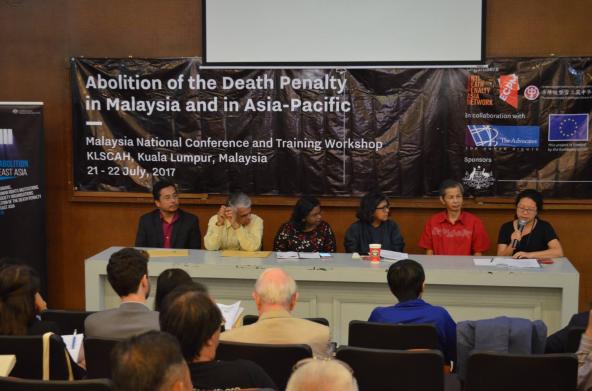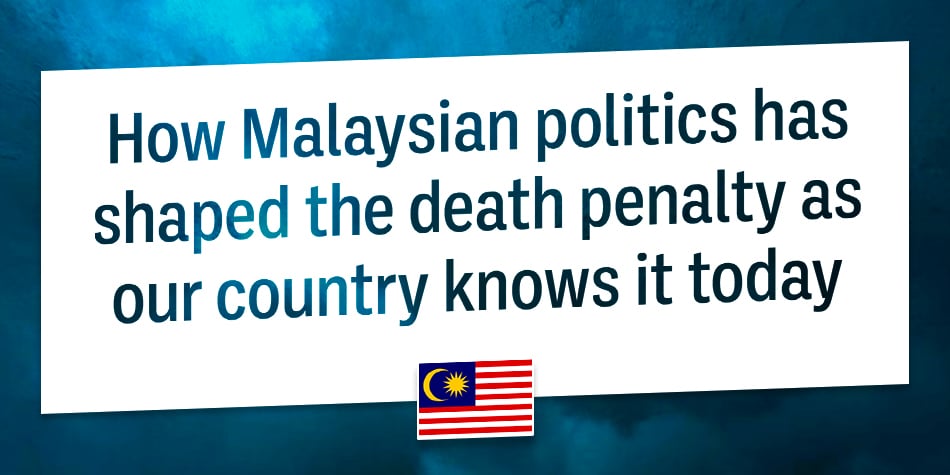
Malaysia and the Politics Behind the Death Penalty: A Tumultuous Relationship.
Asia
On 6 October 2022, the Malaysian government tabled bills abolishing the mandatory death penalty.
However, the parliament was dissolved on 10 October, before the bills were passed. Despite the turbulent journey that Malaysia has undergone towards being an abolitionist country, recent events and activities demonstrate the ever-present commitment towards this agenda. This was a result of the collective effort through legal complexes (lawyers, bar council and the judiciary) and civil society organisations (national, transnational, and international advocacy groups) that have used litigation, networking, and advocacy in incrementally and successfully highlighting the injustices of the death penalty and pressing Parliamentarians for change.
Being one of the few countries around the world to still retain the use of the death penalty in the 20th century, it was a pleasant surprise when the Malaysian Government announced their agreement to abolish the mandatory death penalty on 10 June 2022, following the completion of research that was tabled to push for alternative punishments. Suffice it to say, many Malaysians, international bodies, and abolitionist advocates warmly welcomed this long-awaited news, almost 4 years in the making since the Pakatan Harapan government’s commitment to making Malaysia a no-death penalty zone in 2018.
But to say that our road towards abolition has been smooth sailing would be a far cry from the truth: prior to the announcement, the commitment to do away with the death penalty was filled with multiple delays and setbacks by Parliamentarians, not to mention a political crisis in between which resulted in the changing of government three times which slowed our progress. Adding on to this, advocates continue to face challenges in combatting age-old ideologies that were influenced by government policies of the yesteryears regarding the use of the death penalty, especially with drug offences.
But all in all, from our observations, these events brought to light one factor that played an incredibly significant influence in Malaysia’s abolitionist journey – namely, politics.
Thus, this article will attempt to break down how Malaysian politics has shaped the death penalty as our country knows it today. Firstly, we will explore the background context behind our country’s inheritance of the death penalty, and the political events that have occurred over the years to shift our nation’s view from retentionist to abolitionist.
Background Context
As a previous member of the British colonial administration from 1826-1957, it is of no surprise that the then British Malaya not only inherited the legal and political systems of its British counterparts, but also the laws and punishments that were present at that time – this included the death penalty, of which the United Kingdom (‘UK’) was notoriously famous for in the course of its history. Although Malaysia liberated itself from British rule on 31st August of 1957, it still retained a good majority of these systems and laws that continue to be implemented to this day.
Ironically, the UK took their first steps in abolishing the mandatory death penalty in 1964, just a mere few years after Merdeka, Malaysia’s Independence Day before doing away with it in totality in 1998: One could attribute this to their obligations as signatories and members of various international treaties and bodies, including the European Council of Human Rights and many United Nations Conventions.
Malaysia however, did not follow suit, choosing to focus its resources and policies in favour of stabilising the socio-political changes that were occurring within the country, considering that we were fresh out of independence – an exploration of this can be found later in the article. As of today, the mandatory death penalty applies for 11 offences, ranging from murder, drug trafficking, terrorism, kidnapping, and possession of firearms. A parliamentary reply in February 2022 listed approximately 1,341 persons on death row, of which 905 death row inmates are convicted of offences involving the mandatory death penalty.
The Long and Windy Road towards Abolition
As mentioned earlier, Malaysia’s commitment towards abolition has come a long way considering the politics that have shaped the existence of the death penalty in our country over the years. This section will explore some of these events that have occurred and their respective influences.
The 1980s – The Mahathir Administration, and the War on Drugs.
No discussion on the politics behind the death penalty in Malaysia would be complete without diving into the infamous ‘war on drugs’ that most ASEAN countries undertook since the 1960s: this was often associated with that of the Mahathir administration for Malaysians.
Pre-1980s, the British colonial government introduced the Dangerous Drugs Act 1952 (‘DDA 1952’) in Malaysia as a response to the growing threat of drug-related substances in the 1950s. The Act aimed to govern offences related to drug use and trafficking in the country and still continues to be in force to this day. However, it was only during Mahathir’s administration that the death penalty was introduced into the DDA 1952 in 1975, and was made mandatory in 1983.
This amendment was a result of efforts conducted by the government’s campaign against drugs since it was viewed as a security concern in light of the early stages of Malaysia’s development as an independent country fresh out of colonisation. Quintessentially, the issue was framed in a way that depicted drugs as something incredibly harmful to society, not the mention the dangerous threat it represented to Malaysia’s national security because it could possibly derail national development and cause major incitement to violence.
Thus, it was thought that in order to eliminate drug addiction, action must not only be taken through intensive efforts such as education, advertising, testing, and rehabilitation for relatively small amounts of drugs like heroin, cocaine, or marijuana, but also extremely harsh penalties to nip it at the source: to contextualise a few things, one could associate the increasing rates of drug use in Malaysia the early 80s to the fact that we were situated nearby the ‘Golden Triangle’, an area comprising of Thailand, Myanmar, and Vietnam that were known to be the main producers of heroin poppies – hence, it was of no surprise that the country was used as a point of supply to other regions in South East Asia and the world.
In light of this context, ‘nipping it at the source’ meant targeting the use of the death penalty on those involved in drug trafficking rings, to discourage those who intend to use Malaysia as a transit point for international smuggling to the rest of the world. Hence, the introduction of the death penalty in drug laws was seen as a convenient tool to instil fear in drug suppliers and, rather hopefully, deter them from carrying out their trade.
Suffice it to say, this framing dominated the political space from the 1970s to 1989s: that the mandatory death penalty was a necessary evil needed to combat drug offences. This framing largely influenced public perception at the time to retain the death penalty for drugs because of the threat it posed to breaking down family relations and taking away lives, of which those of the older generation continue to hold onto such sentiments today. To further put it succinctly, this mandate was reflected even in the judiciary’s judgment in various cases, most significantly in Chang Liang Sang & Ors v Public Prosecutor [1982] 2 MLJ 231:
other than in the most exceptional circumstances, a sentence of death should be imposed following a conviction for trafficking, in order to mark the gravity of the offence, to emphasise public disapproval, to serve as a warning to others, to punish the offender and most of all the protect the public
Henceforth, it is of no surprise that our country’s drug laws then were considered to be one of the harshest in the world, even more so with the implementation of the ‘no mercy’ policy for those applying for clemency in the 1990s. According to statistics by Amnesty International, Malaysia saw the hangings of more than 120 death row inmates convicted solely on drug offences from 1983 to 1992, of which 1992 saw at least 39 executions, the highest minimum amount recorded in one year. On average, this meant 15-16 executions per year.
Reflecting upon this period, however, 22 years after Mahathir’s administration, studies have shown that the then Prime Minister’s attempts were somewhat fruitless, especially in relation to heroin: it was found by the US Central Intelligence Agency that almost 2 in 3 Malay youths had used heroin throughout that era, proving that the extreme measures to tackle the issue were insufficient. Additionally, an article published by the New York Times in 1989 showed that the country’s addiction rate still rose, and the intensive war drained much of the country’s financial resources (at that time, it was estimated that $22 million was spent a year).
2010s: A Change of Heart – The Roger Hood Research on Public Opinion of the Death Penalty, and Amendments to s39B(2A) DDA 1952.
It was only at the beginning of 2010 that Malaysia began to see an uptick in the abolitionist agenda following a few events.
Firstly, the case of Yong Vui Kong drew more attention towards the flaws of the laws administering the death penalty, most particularly in relation to how it unfairly targets vulnerable communities: members of the public and leaders questioned the injustice that was meted out against innocent drug mules and carriers, especially since these individuals often came from poor socioeconomic backgrounds and had no choice but to turn to such trade in order to sustain themselves, or their family. As a result of his case, a 2010 campaign to save his life and commute his sentence in Singapore saw more than 109,346 signatures being collected, and members of the Bar Council, NGOs, and civil society organisations coming together to mobilise on public action. Most significantly, members of the public came together to form a clemency petition that was submitted to the Istana in Singapore – an impressive and collective feat that had never been seen before.
It was through the collective efforts of Parliamentarians, lawyers, and activists that likely brought a great change of framing within the community, namely that we started to view things from a human rights and injustice perspective in order to humanise the criminal and focus more on improving our legal procedures to adhere to international fair trial standards. In short, effort needed to be put in place to prevent miscarriages of justice in light of the irreversibility of the death penalty, a key argument that runs through abolitionist rhetorics. Particularly, there was a focus on how the death penalty represented the state impugning upon the constitutional rights and liberties of the accused: most importantly, the right to life: these human rights ideologies that the older generation used to despise was slowly becoming more ingrained into our communities – namely, the growing acceptance of human rights in Malaysian laws.
Thus in light of the growing popularity of the abolitionist agenda, a research study on public opinion conducted by the late Roger Hood in 2013 found that there was minimal opposition to the abolition of the death penalty – even more so for drug offences. In response to this report, Nazri Aziz (a then-law Minister of the Barisan Nasional Government) cited that this would not have been possible without the support of the public. This was explicit proof that public support for certain issues do play a big part in determining the existence of certain laws in place.
Further, Parliament passed an amendment to Section 39B of the DDA 1952 which saw the mandatory death penalty replaced with discretionary sentencing instead – however, some criticisms of the amendment include the fact that it is not retrospective for previous convictions, which makes it unfair for those that have assisted authorities in the past (a now mandatory element in to fulfil for discretion to be exercised in the amendment Dangerous Drugs Act 1952, s.39B(2A)(d). Additionally, it has been cited to be unsatisfactory in tackling the issue of drug offences as found by research studies conducted in 2022.
All in all, it could be said that the political climate and society, in general, were slowly changing to reflect one that was leaning towards mercy and forgiveness.
2018: A New Hope…? Reflecting on the Political Turbulence and Achievements of Pakatan Harapan and Perikatan Nasional.
Prior to the Pakatan Harapan coalition’s victory in the 14th Malaysian General Elections in 2018, the coalition released a manifesto in terms of the promises that the coalition would bring about should they be elected as government of the day – perhaps most significantly was the promise to abolish the death penalty totality in from Malaysian laws, despite their manifesto stating the mandatory death penalty only.
As per their promise after being elected, the then-government affirmed their position and proceeded to impose an official moratorium on all executions in October 2018 which continues to remain in place to this day, something that was widely praised as our first steps towards abolition. Additionally, they also took it upon themselves to review the country’s drug offences, whereby Mahathir, who was the ruling Prime Minister for the second time, declared that the mandatory death penalty which he imposed was seen as “too harsh and effective as a deterrent”.
The coalition were met with resistance by other parties, and very sadly, a slight setback in 2019 occurred when the coalition announced that it would not be abolishing the death penalty in totality just yet, but rather, to focus on abolishing offences that held the mandatory death penalty first and allowing for discretion to be given to judges for certain crimes.
Making matters worse, we saw the coalition’s power as government of the day fall apart following the infamous ‘Sheraton Move’ in 2020, which saw a new government under the coalition of Perikatan Nasional taking over (to last only 17 months before then Prime Minister Muhyiddin Yassin resigned) – in light of 2 Cabinet reshuffles and the political instability that took place, not to mention the Covid-19 pandemic that put Parliamentary work on a hold due to the declaration of national emergency in the country, this meant that any progress to do with abolition suddenly came to a halt and resulted with a standstill in development. Since the move, progress on the presentation of findings were riddled with postponement after postponement due to the need for further scrutiny and research.
This hiatus, however, did not last long: we saw discussions on the death penalty beginning to gain traction again in late 2021 as a result of the international uproar and heavy campaigning from local and international NGOs fighting against the imminent execution of the late Nagaenthran K. Dharmalingam. For the first time in a long time, this saw the culmination of Members of Parliament and Government Officials from the Ministry of Home Affairs coming together and actively taking action to communicate with their Singaporean counterparts to halt his execution in light of his circumstances. Post-execution, calls to abolish the death penalty in Malaysia were made even stronger, emphasising the fact that we could not possibly criticise the acts of our neighbours if we also retained the exact same punishment in our own backyard.
Alongside this period, Parliament also saw Ministers bringing up plans to review and legalise cannabis for medical purposes, an issue which has slowly been gaining traction in the recent years across the globe. Malaysia also saw itself gaining membership in the United Nations Human Rights Council for 2022-2024. All in all, these efforts publicly displayed our commitment towards the abolitionist cause, which brought about praise from the international community.
It was finally in June 2022 that there was an announcement to present the proposals to the alternatives for the mandatory death penalty soon. This was a result of the presentation of a report on the study of alternative sentencing for capital punishment during a Cabinet Meeting, and would mean that the 11 offences holding the mandatory capital punishment will be replaced with alternative forms of punishment. The Malaysian Government will be expected to see a tabling of the relevant legislative amendments needed to abolish the mandatory death penalty in October during a parliamentary setting, and hopefully be on a road towards seeing these amendments take effect by January 2023.
In light of all that has happened, Malaysia’s journey proves to be a prime example of how vital public support and collective action from various stakeholders are, as this in turn changes the laws to reflect the ever-changing societal values that Malaysians uphold. From the CSOs, we saw the agenda being framed in light of the justice and human rights angle to appeal to the public understanding of the death penalty. But all in all, the awareness that has grown over the years among the public has provided sufficient pressure on government bodies in creating bipartisan support in the issue to continue and finish the work of their predecessors in pushing for the relevant amendments.
Concluding Remarks
Overall, despite the turbulent journey that Malaysia has undergone towards being an abolitionist country, recent events and activities that have taken place since still demonstrate the ever-present commitment towards the agenda. This was a result of the collective effort through legal complexes (lawyers, bar council and the judiciary) and civil society organisations (national, transnational, and international advocacy groups) that have utilised the use of litigation, networking, and advocacy – a rather potent combination – in incrementally and successfully highlighting the injustices of the death penalty in our country towards the masses and pressing Parliamentarians for change. This in turn helped to change the political climate regarding the death penalty to steer the change that is very much needed to actualise Pakatan Harapan’s original vision of abolishing the death penalty from Malaysian laws.
All that is left now is for the Malaysian government to follow through with their decision. While it might take time for change to be implemented, hope still remains for Malaysia to turn over a new leaf.
Acknowledgements
The author would like to credit Dr. Thaatchayini Kananatu for some of the content and words behind this article, which was written in conjunction with Anti-Death Penalty Asia Network’s (ADPAN) Podcast on the Death Penalty and Politics (https://adpan.org/adpan-podcast/). For more information regarding this topic, Dr Thaatchayini has recently released an article regarding Framing and the Death Penalty in Malaysia, which interested readers can check out at this link – https://www.crimejusticejournal.com/article/view/2476
Further, the author would also like to express her immense gratitude and thanks to the team at the APDAN for their views and contributions throughout the making of this article – without them, she would not have made it this far in her own personal journey as a budding anti-death penalty advocate.


